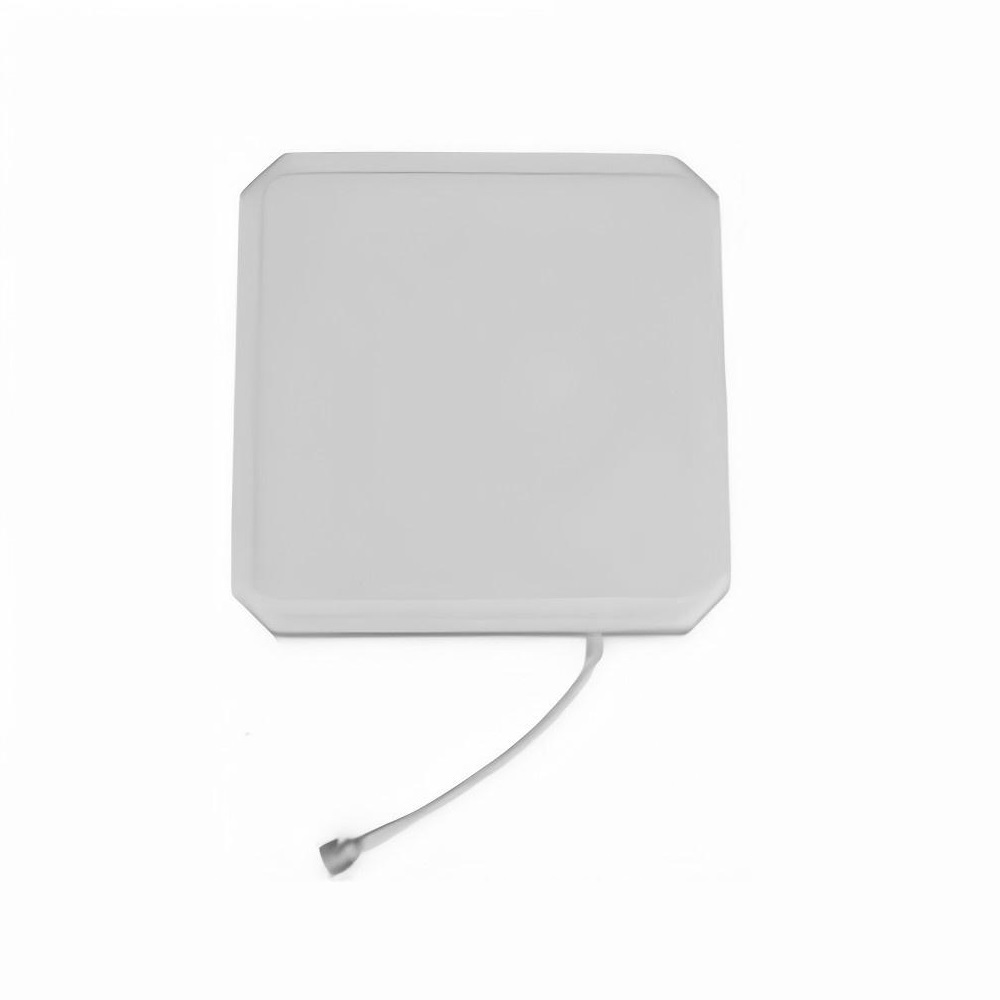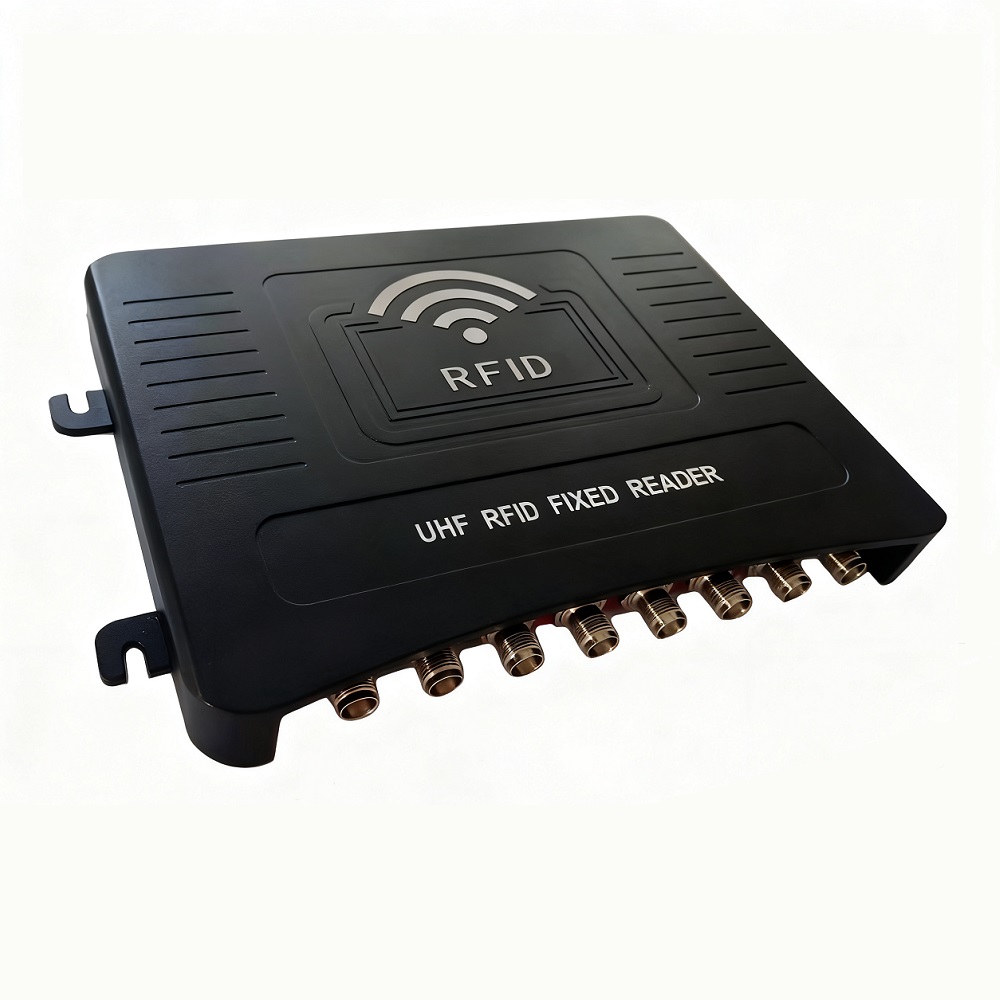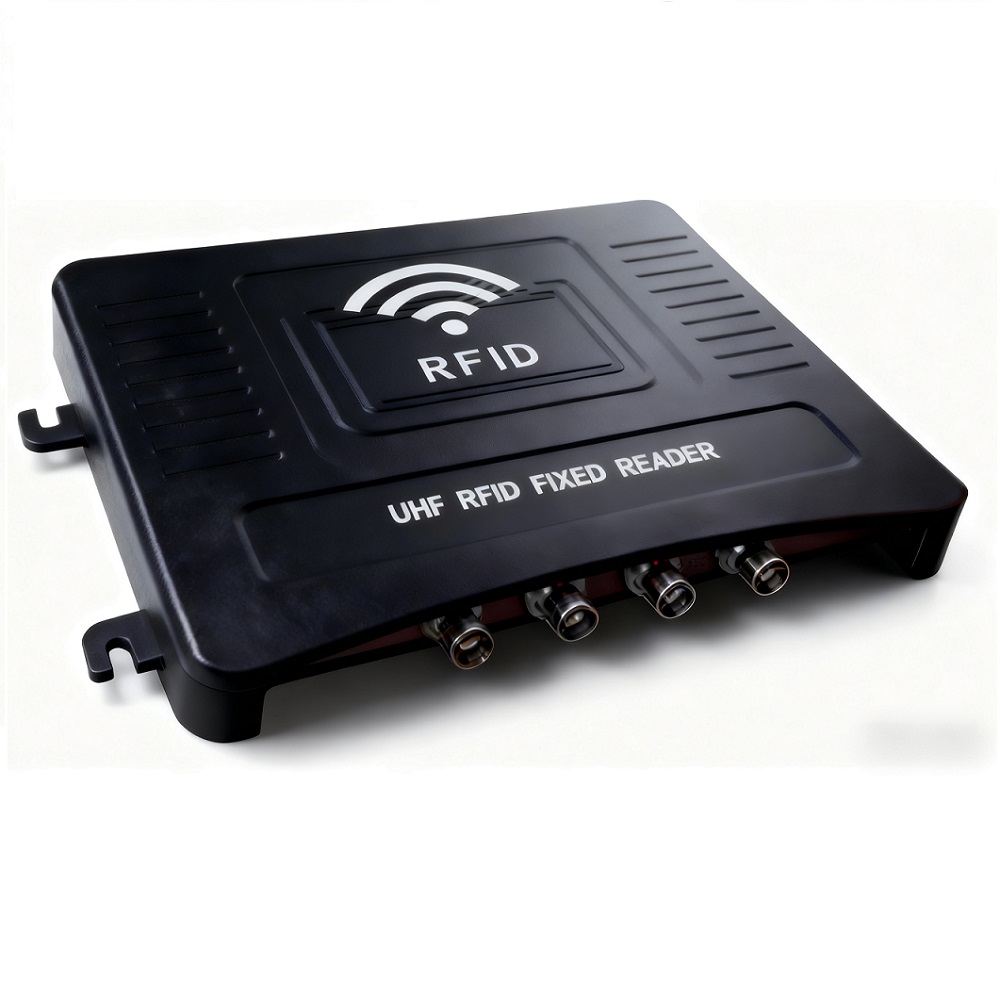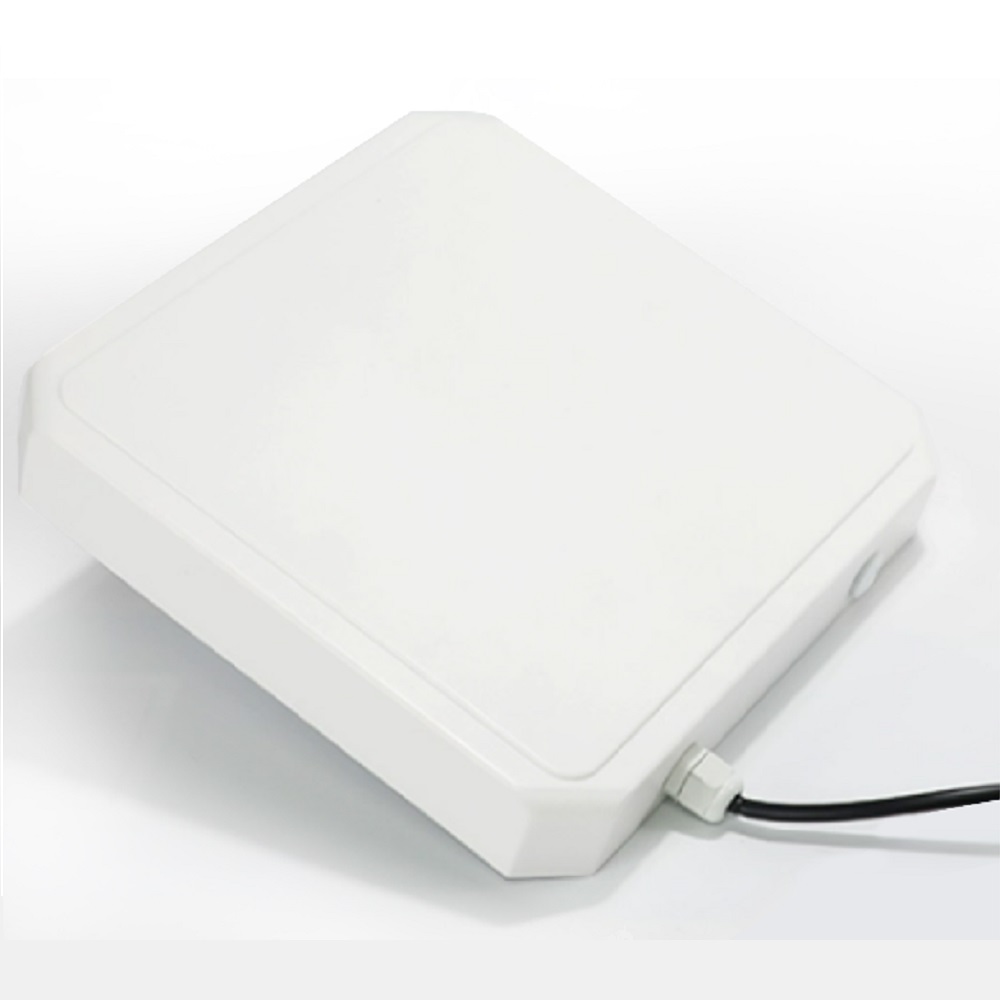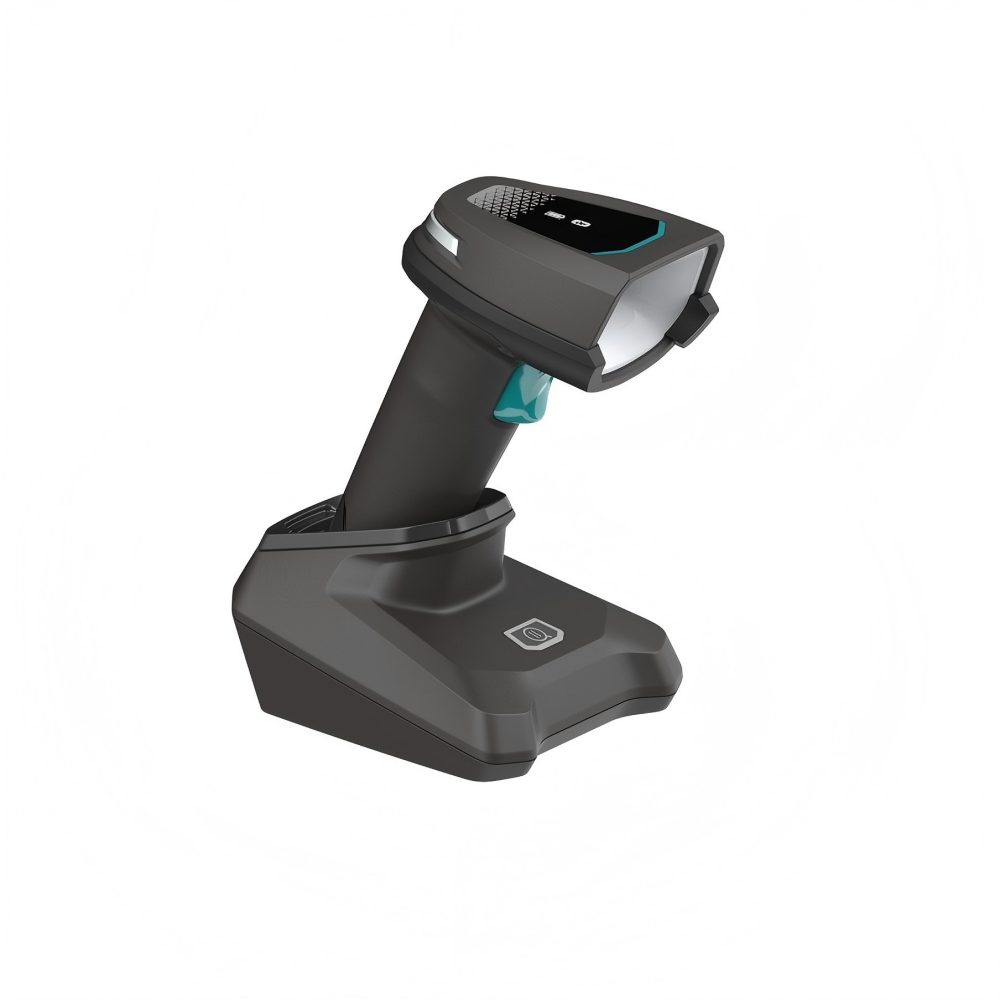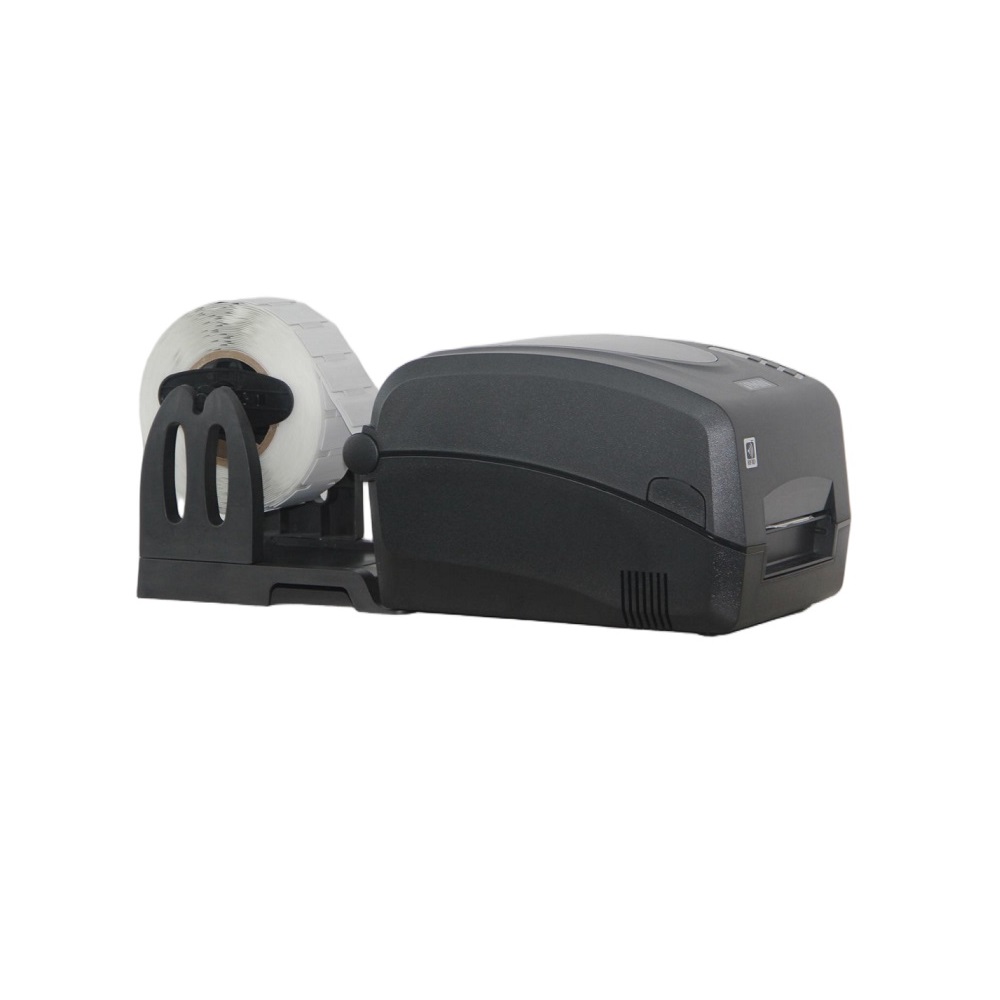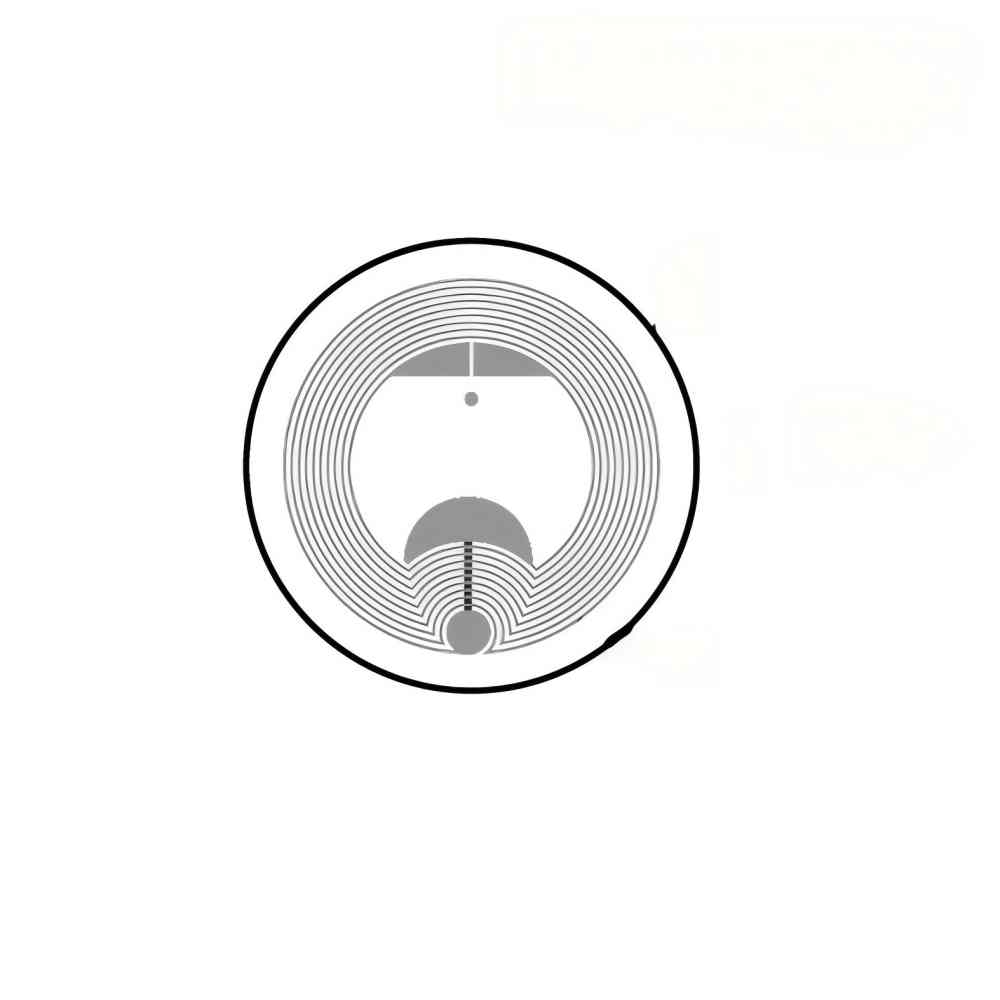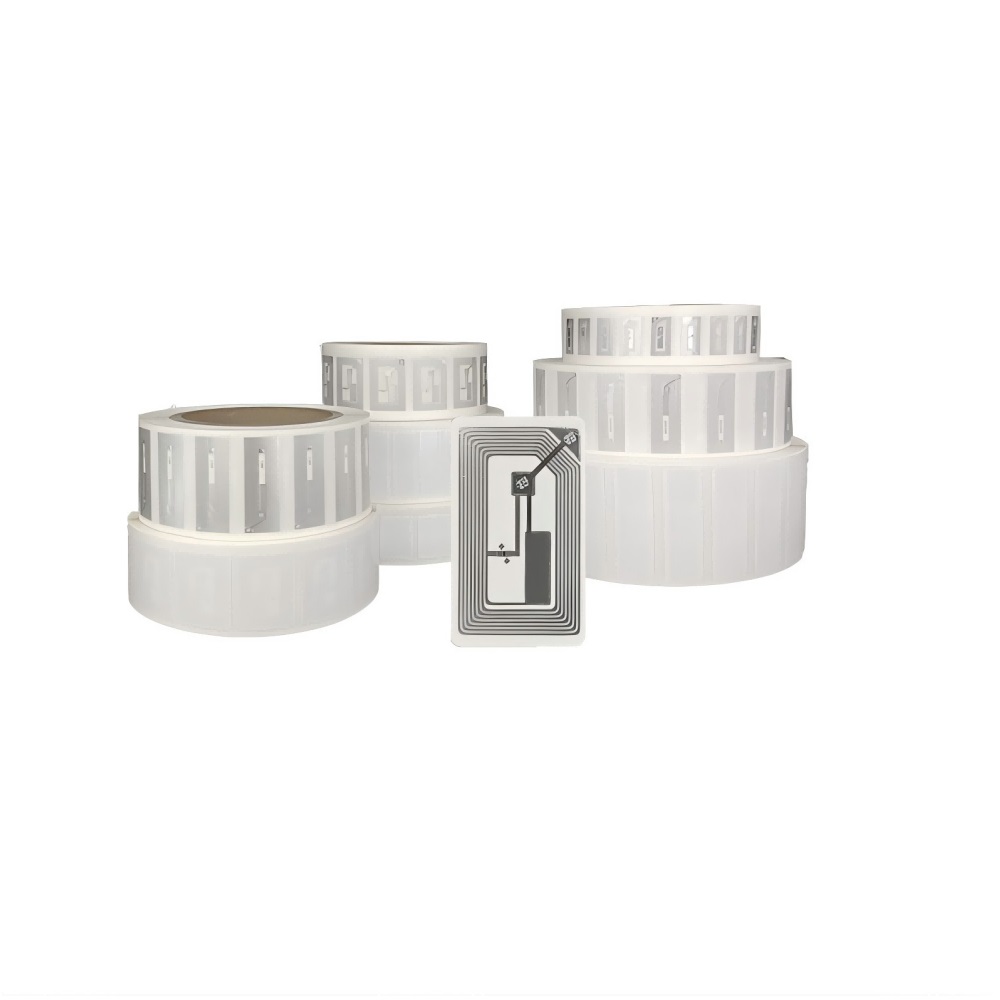RFID (Radio Frequency Identification) uses radio waves to transmit data wirelessly, enabling contactless identification of objects, animals, or humans. A complete RFID system typically consists of a reader, tags, and antennas. Today, this technology has been widely adopted across industries including healthcare, retail, hospitality, and manufacturing. Unlike barcode systems, RFID operates without line-of-sight limitations, offering a significant advantage in practical applications.
In this article, we will answer the common questions about RFID, including what RFID is, how it works, and specific uses, to help beginners get started quickly.
Introduction to RFID technology
How does RFID work?
By affixing RFID tags to items, automated and unique identification and tracking of inventory and assets can be achieved. RFID readers transmit radio wave signals through their antennas. When RFID tags within the signal's coverage area receive these waves, their built-in antennas convert the radio frequency into electrical energy to power the embedded chips. The unique identification data stored in the chips is then transmitted back to the reader via radio frequency signals. Even identical-looking items can be easily distinguished by scanning the tags. Unlike traditional identification methods that require visual contact, RFID technology can read tags from over 30 meters away without line-of-sight interference. Originating from World War II as a means to differentiate friendly aircraft from enemy ones, RFID systems have seen their deployment costs decrease while expanding their applications through technological advancements.

What are the uses of RFID?
RFID has a wide range of applications, covering everything from inventory management to supply chain management. It can also be customized for specific needs such as IT asset tracking, linen management, and rental item tracking. Its core advantage lies in its ability to uniquely identify each item quickly and efficiently. Typical application scenarios include:
(1) Competition timing
(2) Supply chain management
(3) Drug tracing
(4) Inventory management
(5) IT asset management
(6) Laundry and textile tracking
(7) Document tracking
(8) Recyclable transport container tracking
(9) Activity and personnel tracking
(10) Entrance and exit access control
RFID frequency type
When understanding RFID technology, its frequency type is the key point. There are three main types of RFID frequencies, which have different reading distances and application scenarios. In the electromagnetic spectrum, RFID uses the following three types of frequency bands:
(1) Low frequency (LF RFID)
(2) High frequency (HF RFID)
(3) Ultra high frequency (UHF RFID)
1. Low Frequency (LF) RFID bands
(1) Frequency range (conventional): 30-300 kHz
(2) Main frequency range: 125-134 kHz
(3) Reading distance: about 10 cm
(4) Average cost per tag: relatively high
(5) Typical applications: animal tracking, access control, car key sensor, scenes containing large amounts of liquid or metal
(6) Advantages: performs well in liquid and metal environments, with global standards
(7) Disadvantages: very short reading distance, limited memory capacity, low data transmission rate, high production cost
2. High Frequency (HF) RFID bands
(1) Main frequency range: 13.56 MHz
(2) Reading distance: close contact to 30 cm
(3) Average cost per tag: moderate
(4) Typical applications: DVD self-service machines, library books, personal ID cards, poker cards/game chips, NFC applications
(5) Advantages: Support NFC global protocol, optional large memory capacity, with global standard
(6) Disadvantages: short reading distance, low data transmission rate
3. Ultra-High Frequency (UHF) RFID bands
(1) Frequency range (conventional): 300-3000 MHz
(2) Main frequency range: 433 MHz, 860-960 MHz
(3) UHF RFID is divided into two types: active (Active RFID) and passive (Passive RFID)
Active RFID (Active RFID)
(1) Main frequency range: 433 MHz (2.45 GHz can also be used, which belongs to the extremely high frequency range)
(2) Reading distance: 30 meters-over 100 meters
(3) Average cost per tag: higher
(4) Typical applications: vehicle tracking, automotive manufacturing, mining, construction sites, asset tracking, container tracking, construction tool management
(5) Advantages: Read distance is very far, infrastructure cost is low (compared with passive RFID), large memory capacity, high data transmission rate
(6) Disadvantages: high cost of labels, battery limitations on transportation, complex software systems, susceptibility to metal and liquid interference, lack of unified global standards
Passive RFID (Passive RFID)
(1) Main frequency range: 860-960 MHz
(2) Reading distance: contact to about 25 meters
(3) Average cost per tag: low
(4) Typical applications: manufacturing, pharmaceutical tracking, automatic charging, inventory management, competition timing, asset tracking, supply chain management, IT asset management, tool tracking, linen tracking, library management, access control, user experience optimization
(5) Advantages: long reading distance, low cost of tags, various shapes and sizes of tags, global standards, high data transmission rate (6) Disadvantages: high equipment cost, medium memory capacity, susceptible to metal and liquid interference
Although the wide frequency range of 860-960 MHz is recognized as the "global standard" for UHF passive RFID, the main subbands of passive RFID are further subdivided into two main subbands due to their late adoption:
(1) 865-868 MHz: ETSI Standard (Europe) The European Telecommunications Standards Institute (ETSI) stipulates that RFID devices and tags can only use this band to avoid interference with other forms of wireless communication.
(2) 902-928 MHz: FCC standard (North America), the United States Federal Communications Commission (FCC) stipulates that RFID tags and devices can only operate within this frequency band.
Many countries either adopt ETSI or FCC standards for RFID frequency bands, or establish local regulations based on subsets of these bands. Additionally, nations impose controls on specific parameters such as maximum radiation power, frequency hopping requirements, and licensing mandates. Before implementation, it is crucial to thoroughly understand the detailed specifications of relevant regions.
What are the components of an RFID system?
Although RFID systems vary in type and complexity of equipment, traditional (fixed) RFID systems contain at least the following four basic components:
(1) Reader: Responsible for communicating with RFID tags.
(2) Antenna: used to transmit and receive radio frequency signals.
(3) Tag: attached to the item, store the information related to the item.
(4) Cables: realize signal transmission between devices.
When systems employ integrated devices such as portable, handheld, or USB-type RFID readers, the reader, antenna, and cables are typically combined into a single unit. More sophisticated RFID systems may incorporate multi-port readers, antenna switches, GPIO expansion modules, auxiliary devices (like alarm lights), multiple antennas, and connecting cables, all requiring comprehensive software support.
What is an RFID tag?
Take the common RFID tag as an example, its most basic structure includes two parts:
(1) Antenna: used to send and receive signals.
(2) Chip (also known as integrated circuit IC): used to store tag ID and other information.
RFID tags are typically affixed to objects' surfaces, enabling automatic identification and tracking through RFID readers and antennas. Most RFID tags are passive (unless marked as active or BAP tags), which obtain energy from radio frequency signals emitted by the reader. When a tag receives a signal from the reader, the energy is transmitted through its internal antenna to the chip. Once activated, the chip modulates and sends the information back to the reader.
An RFID chip generally contains four storage areas:
(1) EPC area: can write identification information (such as code).
(2) TID area: store the factory information and unique ID of the tag, which cannot be changed.
(3) User area (User): can store additional data.
(4) Reserved: used for special operations, such as locking tags, extending EPC length, etc.
There are many kinds of RFID tags in the market, which are different in shape and size to adapt to various application scenarios, material surfaces and environmental conditions. The selection of appropriate tags is the key to ensure the read and write performance.

Types of RFID tags
Due to the rich and diverse application scenarios of RFID, RFID tags can be classified in many ways. One of the common classifications is soft tag (Inlay) and hard tag (Hard Tag):
(1) Soft label (Inlay): lower price.
(2) Hard tag: more durable, strong weather resistance, relatively high price.
In addition, labels can be classified by the following dimensions:
(1) Shape category: soft label (Inlay), label paper (Label), card (Card), badge (Badge), hard label (Hard Tag).
(2) Frequency types: low frequency (LF), near field communication (NFC), high frequency (HF), ultra high frequency passive (UHF Passive: 902-928 MHz, 865-868 MHz or 865-960 MHz), BAP tags, active tags (Active).
(3) Environmental adaptability: waterproof, wear-resistant, high and low temperature, chemical corrosion resistance.
(4) Customizability: shape, size, printing content, coding mode.
(5) Specific functions/applications: laundry tags, sensor tags, embedded tags, high temperature and high pressure sterilization tags, vehicle tags, large capacity storage tags.
(6) Specific surface materials: labels for metal surfaces, labels for glass surfaces, labels suitable for liquid containers.
What is an RFID reader?
The RFID reader is the core component of an RFID system, also known as an interrogator, which communicates with RFID tags by transmitting and receiving radio waves.
According to mobility and flexibility, RFID readers are usually divided into three types:
1. Fixed RFID Readers: These devices are installed in fixed locations such as walls, desktops, or access control points. Most models feature external antenna interfaces that can connect 1 to 8 antennas, and when combined with multiplexers, they can support up to 64 antennas. The required number of antennas depends on the coverage needs of specific applications. For instance, file access management might only require one antenna, while scenarios needing extensive coverage like race finish line identification typically demand multiple antennas.
2. Mobile RFID Readers: These handheld devices are highly flexible, enabling real-time tag reading and communication with host systems or smart terminals. Primarily wireless and battery-powered, they transmit data via Wi-Fi or Bluetooth. The category includes both mobile terminals with built-in processors and docked readers that connect to smartphones/tablets through Bluetooth or auxiliary ports.
3. USB Reader: It is a special type between fixed and mobile, which can be used to connect with computers without external power supply. Compared with traditional fixed readers, it is more flexible and often used in desktop scenarios, suitable for reading and writing operations of a single RFID tag.
Furthermore, integrated readers represent a subset of both fixed and mobile reader systems. While most mobile readers are integrated, some fixed readers also adopt this design approach. These integrated readers feature built-in antennas that eliminate the need for external components, offering an aesthetically pleasing appearance suitable for indoor environments and applications requiring low-throughput tag processing.
RFID readers can also be classified according to the following dimensions:
(1) Frequency range: US / FCC 902-928 MHz, Europe / ETSI 865-868 MHz.
(2) Connection mode: Wi-Fi, Bluetooth, Ethernet LAN, serial port, USB, auxiliary interface.
(3) Available functions/extending modules: HDMI, GPS, camera, GPIO, 1D/2D bar code recognition, cellular communication, etc.
(4) Processing capacity: with local processing function, no local processing function.
(5) Power supply: power adapter, PoE Ethernet power supply, battery, car power supply, USB.
(6) Number of antenna ports: no external port, 1 port, 2 ports, 4 ports, 8 ports, 16 ports, etc.
How to choose an RFID reader?
When selecting an RFID reader, refer to the following key questions:
1. What is the required reading distance?
2. Are there extreme conditions in the application environment, such as high temperature, cold, humidity or impact?
3. Is the reader connected to the network?
4. Is the reader fixed in place or used on a mobile device (e.g., vehicle)?
5. Does the reader need to be mobile?
6. How many read points or read areas are expected?
7. How many tags do you need to read at a time?
8. How fast is the label reading area, a slow moving conveyor belt or a fast moving conveyor belt?
What is an RFID antenna?
As a critical component of RFID systems, the antenna converts signals emitted by RFID readers into radio frequency (RF) waves for tag reception. Whether integrated within the reader or functioning as an external component, the absence of an antenna prevents normal communication between the reader and tags. Unlike readers, RFID antennas are termed "dumb devices" as they lack power supply, energy storage, and computational capabilities. After receiving energy from the reader, the antenna generates an RF field to transmit signals to nearby tags. The antenna's ability to propagate energy in specific directions is called "gain". Higher gain results in stronger RF fields and extended transmission distances.
The most common classification of RFID antennas is based on the "polarization mode" of the radio frequency waves they emit:
(1) Linear Polarization Antenna: Transmits radio frequency waves in horizontal or vertical planes. The polarization direction significantly affects reading distance. To maximize range, the antenna must align with the RFID tag's polarization orientation. For example, using a vertically polarized antenna with a horizontally placed tag drastically reduces reading distance. The tag's polarization direction can typically be determined by observing the antenna's orientation, with the longer edge indicating the polarization direction. While different products may have varying polarization orientations, installation alignment can be achieved by rotating either the antenna or the tag.
(2) Circular Polarization Antenna: This antenna emits radio frequency waves through rotational movement between horizontal and vertical planes, offering better compatibility with RFID tag orientations. It ensures reliable reading even when tags face different directions. However, since energy is distributed across two directions, its reading distance becomes shorter than that of linear polarization antennas under the same gain conditions.
RFID antennas can also be classified according to the following dimensions:
(1) Frequency range: 902-928 MHz for the United States / FCC, 865-868 MHz for Europe / ETSI, and 860-960 MHz for global use.
(2) Applicable environment: indoor (IP protection class), outdoor (IP protection class).
(3) Reading distance: near field (near field), far field (far field).
(4) Installation mode: shelf type, ground type, panel type, access control type.



